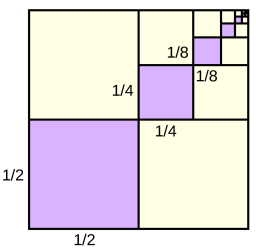Find k
Find k so that the terms k-3, k+1, and 4k-2 form a geometric sequence. Show your solution.
Final Answer:

Tips for related online calculators
Are you looking for help with calculating roots of a quadratic equation?
Need help calculating sum, simplifying, or multiplying fractions? Try our fraction calculator.
Do you have a linear equation or system of equations and are looking for its solution? Or do you have a quadratic equation?
Need help calculating sum, simplifying, or multiplying fractions? Try our fraction calculator.
Do you have a linear equation or system of equations and are looking for its solution? Or do you have a quadratic equation?
You need to know the following knowledge to solve this word math problem:
algebranumbersGrade of the word problem
Related math problems and questions:
- Difference 81849
 Determine four numbers so that the first three form the successive three terms of an arithmetic sequence with difference d=-3 and the last three form the next terms of a geometric sequence with quotient q=one half.
Determine four numbers so that the first three form the successive three terms of an arithmetic sequence with difference d=-3 and the last three form the next terms of a geometric sequence with quotient q=one half. - Parabolic sequence
 Find the sum of the first nine terms of an arithmetic sequence whose general term is a(n) = 3n²+5
Find the sum of the first nine terms of an arithmetic sequence whose general term is a(n) = 3n²+5 - AP five members
 Give the arithmetic sequence of 5 terms if the first term is 8 and the last term is 100. Show your solution.
Give the arithmetic sequence of 5 terms if the first term is 8 and the last term is 100. Show your solution. - Adding mixed numerals
 3 3/4 + 2 3/5 + 5 1/2 Show your solution.
3 3/4 + 2 3/5 + 5 1/2 Show your solution. - Sequences AP + GP
 The three numbers that make up the arithmetic sequence have the sum of 30. If we subtract from the first 5, the second 4, and keep the third, we get the geometric series. Find AP and GP members.
The three numbers that make up the arithmetic sequence have the sum of 30. If we subtract from the first 5, the second 4, and keep the third, we get the geometric series. Find AP and GP members. - Sum of the fractions
 Find the sum, express your answer to lowest terms. 1. 1/4 + 2/4= 2. 1/6 + 3/6= 3. 6/10 + 2/10= 4. ¾ + ⅛= 5. 5 3/5 + 2 ½=
Find the sum, express your answer to lowest terms. 1. 1/4 + 2/4= 2. 1/6 + 3/6= 3. 6/10 + 2/10= 4. ¾ + ⅛= 5. 5 3/5 + 2 ½= - GP - three members
 Insert three numbers between the roots of the equation 4x² - 17x + 4 = 0 so that they form with the given GP numbers.
Insert three numbers between the roots of the equation 4x² - 17x + 4 = 0 so that they form with the given GP numbers.
